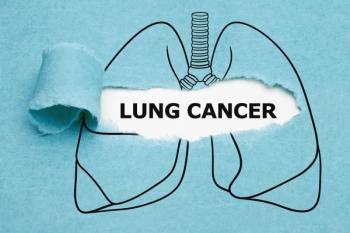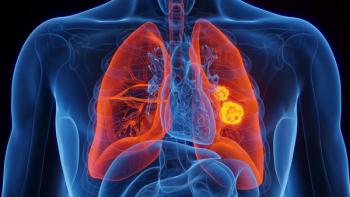
Cancer Care Delays in COVID-19 Could Lead to Higher Morbidity, Mortality

Cancer screenings and treatments saw a sharp decline during the early months of the pandemic. The authors of a new study on the delays in care warn that the fallout may be grim.
Screening and treatments for breast, colon, prostate, and lung cancers saw harsh declines in 2020 due to the coronavirus disease 2019 (COVID-19) pandemic, and oncology care delivery has yet to fully rebound,
The peer-reviewed study, conducted by
Screenings for breast, colon, prostate, and lung cancer dropped dramatically (by 85%, 75%, 74%, and 56%, respectively) at the peak of the pandemic in April 2020 compared with 2019. Delays in screening can negatively impact patients in a big way.
“If that happens, whatever the cause may be, there'll be higher mortality from cancer, and patients will be diagnosed later in the course of disease,”
He added that patients who are diagnosed at a later stage with more complex disease or comorbidities have the potential to increase the cost of care to the health system and to payers, so being proactive and getting patient screenings back to their pre-COVID-19 levels is imperative on that front as well as for patient outcomes.
In addition to the drop in screenings early in the pandemic, there were 2 significant dips in billing for the top 23 physician-administered oncology products (determined by 2018 Medicare Part B spending). In April of 2020, billing for those products was down 26% compared to 2019. After a rebound in June, which saw a relatively better 17% decline compared to last year, July saw an even worse decline (-31%).
There were also 2 distinct drops in billing for the administration of chemotherapy compared to last year. At professional practices, chemotherapy administration dropped by 19% in March of 2020 versus 2019, 28% in April, 30% in May, 19% in June, and 31% in July. Institutional practices saw declines of 10%, 21%, 21%, 16%, and 31%, respectively. Reductions were also seen in both April and July for breast (-71% and -31%), colon (-79% and -33%), and lung biopsies (-58% and -47%).
The authors, led by Debra Patt, MD, PhD, MBA, of Texas Oncology, suspect that the second waves of billing declines in the latter months of the pandemic speak to the typical time between screening, diagnosis, and treatment. “Due to the extended timeline of a patient’s cancer treatment journey, there is an expected lag of up to three months between when a patient is screened for cancer and is subsequently scheduled for a biopsy and then eventually receives treatment,“ the authors wrote.
Patient evaluation and management (E&M) visits saw the most significant dip in April, when hospital outpatient E&M visits were down 74% from 2019. The drop was more significant in new patient E&M visits than for established patients.
Overall, providers in institutional settings saw larger dips in cancer care delivery than those in community settings by an average of 10 percentage points from April to July, likely due to the resource and supply chain barriers posed by the pandemic. Patient reluctance to seek care at the hospital may also have played a part, the authors note. Telehealth, which was implemented largely by community oncology practices, helped quell that issue but could not bridge the gap.
“I admire the hospital systems, as they had to handle the acute crisis of a lot of incoming patients with COVID-19. They had to put all their resources into the acute care of such patients,” Gordan explained. “There's 95% telehealth in community oncology versus a much lower number, in the single digits, in hospital oncology practices. This is because the hospitals are dealing with many more complex problems. But essentially, the way we [adapt] in community oncology tends to be faster.”
The study authors aim to raise awareness of the potential fallout from delays in screenings and cancer treatment and encourage people to stay on track with preventive and continuing care. Now that practices have created protocol to keep patients safe as they seek care, Gordan hopes that those who need cancer care will be able to receive it without worry.
“I hope we, as providers, continue to educate and show that it is important to maintain preventive care,” Gordan said. “And so we hope to get behind processes and procedures related to public service announcements, to hopefully get the word out there that we cannot stop taking care of ourselves.”
Reference
Patt D, Gordan L, Diaz M, et al. The Impact of COVID-19 on Cancer Care: How the pandemic is delaying cancer diagnosis and treatment for American seniors. JCO Clin Cancer Inform Published online October 21, 2020. Accessed October 22, 2020. doi:10.1200/CCI.20.00134
Newsletter
Stay ahead of policy, cost, and value—subscribe to AJMC for expert insights at the intersection of clinical care and health economics.







































